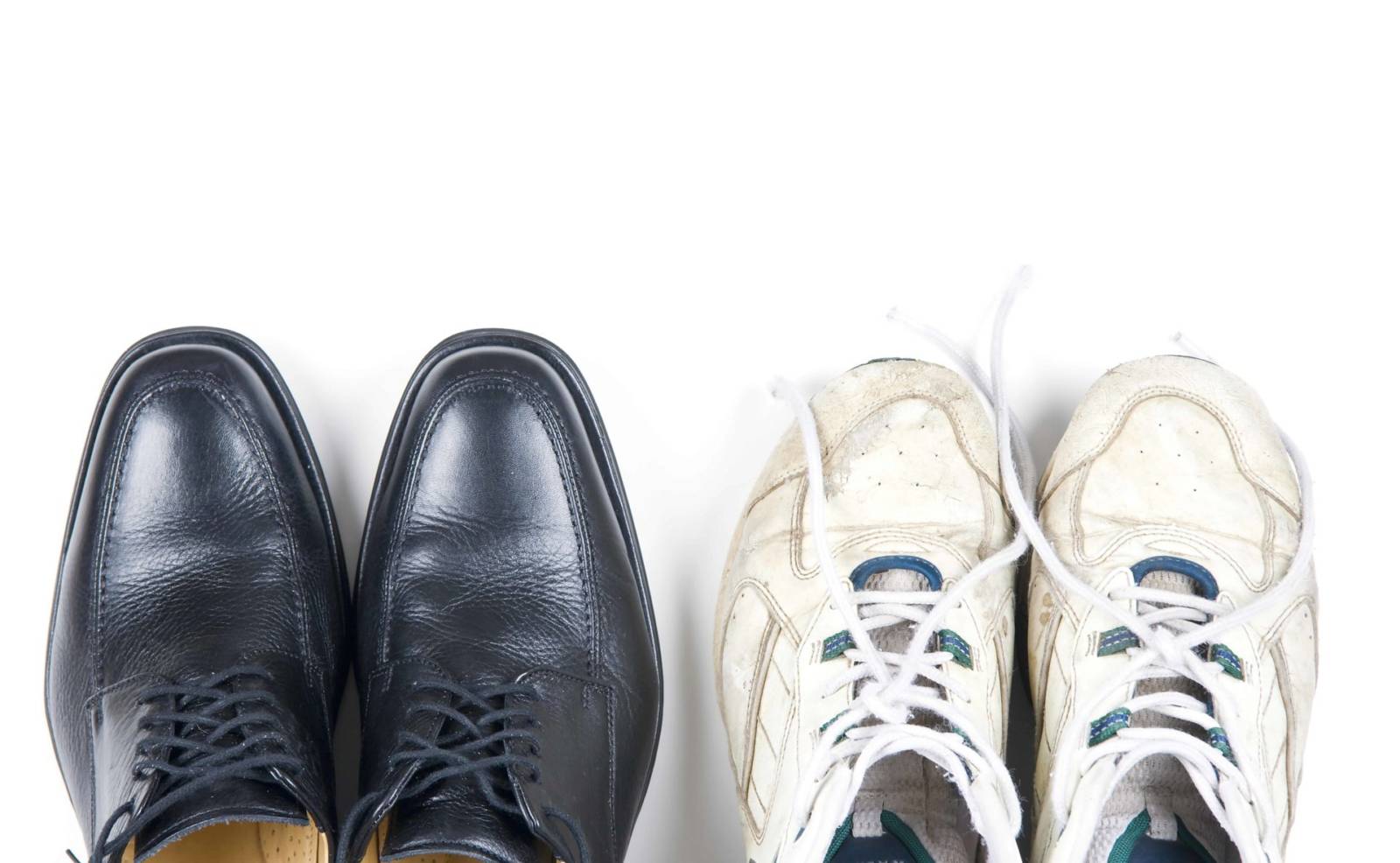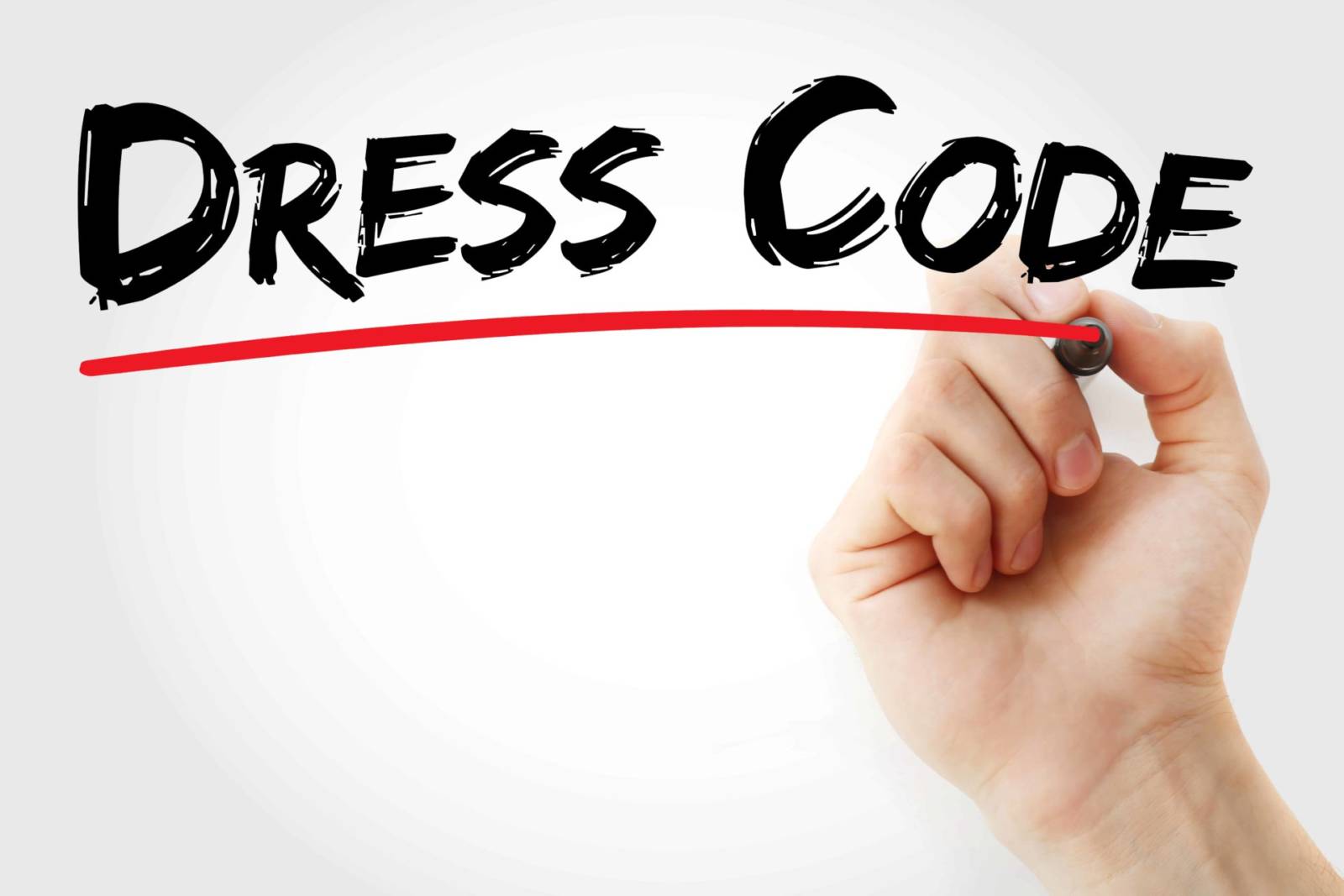
Does Dress Code Affect Productivity in the Workplace?
We’ve all heard the age-old adage, “dress for success,” but is it true? Does what you wear to work affect your performance? Could your clothes have an impact on productivity? Read on as we tackle the ins and outs of dress codes in the workplace.
The Research

To learn how to deliver a positive workplace experience amidst the pandemic, check out our recent webinars.
Our team is here to help you automate COVID-safety in your office, from social distancing to contract tracing. To see how it works book a demo.
There are varying viewpoints, each supported by data, regarding workplace dress codes out there.
Michaela Rollins, Head of Brand and Content at Hive, a project software company, wrote a piece posted on Hive’s website entitled, “Does What We Wear to Work Affect Our Productivity.” According to Rolllins, “Typically, if you’re expected to don a suit and tie, it’s a more buttoned up (literally) environment with client-facing activity. These formal dress codes are often associated with companies in the finance or law realms. Less formal offices tend to employ people for more behind-the-scenes work (think a young tech company), where something like jeans and Allbirds are standard. There are also companies that fall somewhere in-between — 62% of companies across the country allow casual dress at least once a week, compared to the 36% that allow it every day. 36% isn’t a crazy high percentage, but it is an increase from the 2014 percentage, which was only 19%.”
Rollins continues on to suggest that casual dress is the way to go, writing, “According to studies, 61% of employees are more productive when the dress code is relaxed, and 80% of people who work in an environment with a dress code responded that they don’t find them useful. Those are pretty staggering statistics. Breaking that down, there are a few reasons people have started to favor a more casual dress code. One of the reasons is the financial burden that comes from a suit-and-tie environment — you’re expected to invest in nice suits, shoes, ties, and dresses. Not everyone can afford to spend thousands of dollars on their workplace attire. Another big reason is comfort and confidence. When people are able to wear the clothes that they’re comfortable and confident in, morale is higher and people are more productive overall.”
But, not everyone agrees with Rollins’ standpoint. A research report done by Angie Shinn, Ali Swigart, Ashley Gritters and Matt Schmailzl, all students at Central College in Iowa, cited research that had the opposite take of Rollins. According to the report from the Central College students, “According to a survey of over one thousand human resource executives, almost half of the companies with a casual dress-down policy reported a significant increase in tardiness, absenteeism, and flirtatious behavior (Egodigwe & Alleyne, 2003). Another survey concluded that casual dress may lead to a casual work ethic (Peluchette & Karl, 2007, p. 349-350). In contrast, employees who dress formally (i.e. a suit and tie), are considered to have high credibility, are taken more seriously, and are more likely to be viewed as upper management material from top executives (Chaney & Lyden, 1999; Wood & Benitez, 2003).”
Relaxed Dress Code: A Closer Look

Change, a specialist recruitment consultancy based in Scotland, writes in part, “Many companies view employee appearance as a reflection of the company. According to conventional thinking, strict dress codes (i.e. a suit and tie) conveys a sense of authority, responsibility and trustworthiness. Allowing employees to dress as they see fit also leaves room for ambiguity and some companies worry that employees won’t choose professional apparel. As a result, a casual dress code can seem a bit risky or an unwise move. On the other hand, providing employees with more flexibility, in terms of what they wear, does have some benefits and may be better suited for the modern workplace.”
Change put together the following list of advantages of a “relaxed dress code.”
- A More Attractive Work Environment
- Happier Employees
- More Productive Employees
- Greater Diversity
Writing for the The Houston Chronicle, M.T. Wroblewski addressed the pros and cons of relaxed dress codes. Wroblewski’s article from August of 2020 reads in part, “Business owners often hope to reap other dividends from relaxed dress codes in the workplace (or no codes at all), HR Daily Advisor says. If casual clothing helps employees feel more relaxed, the reasoning goes that they also could:
Feel less stress on the job, leading to greater productivity. (Interestingly, a strong case is made for the contrarian view, too.)
Be more inclined to collaborate with their colleagues.
Register the positive message that their employer trusts them to make good choices, thereby allowing them to express their individuality.
Encourage them to be physically active during their lunch break. This may seem like a minor benefit, but it’s one that can add up: Healthier employers cost an employer less in insurance costs.”
According to Wroblewski, “If your clients and customers are whispering about the casual nature of your employees’ attire, chances are that they are drawing some negative inferences about them, you and your business. Accurate or not, they would have Wilde nodding in agreement:
Employees don’t care about the image they project to others.
They are less serious and professional about their jobs. And if they’re less professional, they may cut corners that matter.
Their casual dress code also becomes their mindset, causing them to be less productive.
They lack a fundamental respect for their employer.
The company they work for takes an equally casual approach to business.
Is a Dress Code Right for Your Business?

CEO Today Magazine, which has a print and online magazine focused on highlighting the innovation and leadership among business leaders and their organizations, provides helpful context when answering the question of whether a dress code is right for your business.
According to a piece on its website, CEO Today wrote, “Taking a look at the research we’ve found, it’s clear to see that it depends on the employee as to whether they should follow dress code. Each individual is different though. First impressions still, and most likely will, always count. If employees are in a client-facing role, it’s important to look professional and approachable — they are effectively representing the business and should be making it look good. Company bosses should take the opportunity to ask their employees how they feel about uniforms and when they feel most productive. This could be the best indicator of whether a uniform is best for the business or not. As we’ve seen, uniforms can affect behaviour at work and it is down to the individuals as to whether they work best following, or not adhering to, a dress code.”
More Advice

The research we cited earlier from the Central College students also included a thoughtful list of guideline that we are sharing below:
Guidelines for the Company
- Before implementing a new dress policy note the preferences of employees in order to more accurately predict the impact on employees’ attitudes and behaviors.
- Ease into changes of the dress code policy. Making a major transition too abruptly could have a negative effect on employee productivity, performance, and budget (Peluchette & Karl, 2007).
- Have a set of clearly defined guidelines for dos and don’ts about work place attire (Reddick, 2007).
- Make sure employees are aware of the punishment involved in not adhering to the policy.
- Be open to feedback from employees, and be able to reasonably explain why policy changes are needed.
- Make sure every employee affected by the policy is aware of new expectations. The easiest way is through e-mail, a large group meeting, or an updated employee handbook.
- Lead by example (Hanley, 2009).
Guidelines for the Employee
- Wear clothes that fit your body type (Kopulos, 2009).
- Avoid wearing lowcut, see-through, or formfitting shirts (McCarty, 2010; Kopulos, 2009)
- Cover tattoos and remove all body piercings (Kopulos, 2009).
- Make sure hair is wellgroomed (Kopulos, 2009).
- Remember: less is more. This rule applies for makeup, jewelry, perfume, and cologne (McCarty, 2010; Kopulos, 2009).
- Wear shoes that are closed toed with little to no heel, and of neutral color (McCarty, 2010; Kopulos, 2009).
- For women, make sure that skirts are no shorter than two inches above the knee (Kopulos, 2009).
Smartway2 is a workplace scheduling system that helps enable peak performance from employees. Using Smartway2 is easy and can help to pave the way towards a “culture of innovation.”


